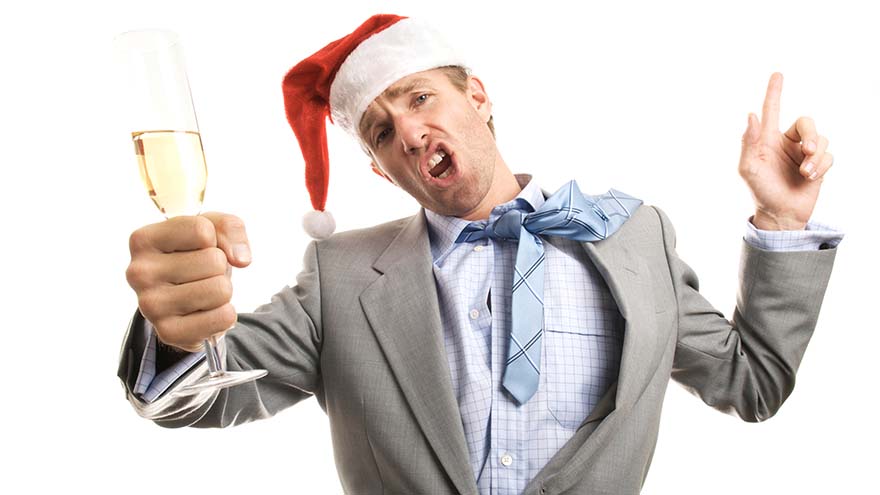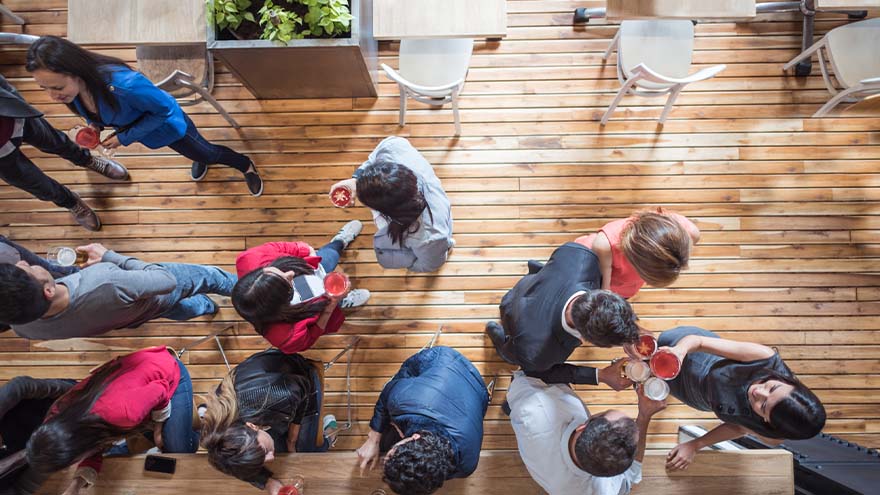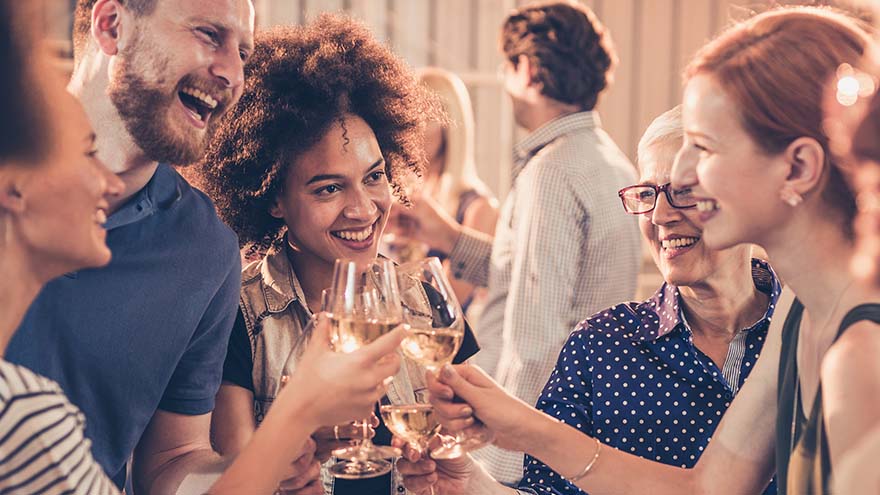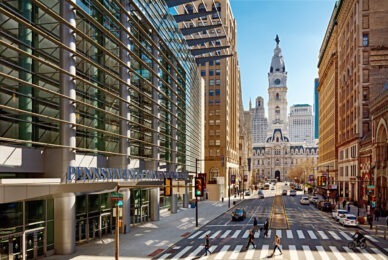Returning to F2F, do alcohol and meetings still mix?
“It happened in Sao Paulo, Brazil, in 2009,” Juliane Farinazzo, co-founder and events director of Bijou Events, remembers as if it were yesterday. A director of her client company got furious with her staff and event workers, made a huge scene, demanding to keep drinking when the bar closed.
It’s one of those things you never forget, even when years have passed. In a way, she was lucky. It could have been much worse.
“I’ve had over-served attendees swim in fountains, attendees get a little too romantic on an evening cruise, and one had so much to drink at the welcome reception he became physically ill in the general session and needed to be transported to the hospital via fire rescue.”
“Threw up in the room and fell through the glass shower door.”
“Faceplanted on the table during a global investigator meeting, causing four glass bottles to topple to the floor.”
“Attempted to dive off a second-floor balcony into the pool.”
“Overindulged and fell down a hotel escalator on his way to his guest room.”
“Sales leadership event where the VP of sales, after several drinks at the event, took some of his team out to a bar on property, ordered more drinks for the group and then refused to pay. Then took the group out on to the property’s golf course and started running around destroying the turf and making lots of noise.”
“An attendee couldn’t find his way back to his guest room. Hotel security found him in the kitchen of the hotel lobby restaurant and asked him to take a seat in the lobby while the front-desk staff figured out where he belonged. In the meantime, he urinated all over himself and the chair he was sitting in.”
“A senior member of our firm got so wasted he had to be put on a luggage cart by junior staff and taken to his room. He never made it down for the remaining two days of the meetings.”
“A co-worker got completely wasted and then was sexually harassed by another co-worker since he figured she wasn’t going to remember.”
“My boss got caught doing the dirty by his wife in the woman’s bathroom with his wife’s best friend.”
“Guy got too drunk in Vegas and masturbated in the elevator.”
Last Call for Alcohol?

We didn’t make this stuff up. They are actual horror stories as recounted by meeting professionals in a recent Smart Meetings survey. But before delving more deeply into what that survey revealed, consider the changed world we now live in.
As gatherings in ballrooms and event venues return, we are trying to keep them safe by encouraging distancing and a minimum of physical contact. Of course, alcohol fosters relaxed attention to these very cautions and encourages people to get closer, lean in, hug…and sometimes more. As Jerry Diaz, CMP, HMCC, director of meetings and events and founder of Monterey Meetings and Events, puts it, “We are still learning social distancing. If mandates are in place for masks, elbow-bumps, and so on, these could be ignored by those who have imbibed too much.”
When the usual mental filters are flooded by several drinks, they can also let sexual, racial and other unwanted behaviors seep through. “Reduced awareness of safety protocols in addition to loss of good judgment,” is how Michele Shry, manager for events, meetings and travel at Petco Health & Wellness Company, sums it up.
But the risks of alcohol existed before the pandemic, you might be tempted to say. Yes, they did. But now, factor in the virtually unprecedented situation where we find ourselves. In the isolation of our home offices, when sweatpants and the freedom of unsupervised workdays prevail, more than a few of us picked up bad habits, says Joseph Allen.
Allen is a meeting scientist. The University of Utah professor and author of Suddenly Virtual: Making Remote Meetings Work is also director of the Center for Meeting Effectiveness. “From a meetings perspective, what we do in Covid lockdown doesn’t stay in Covid lockdown,” he says. “When you change your behavior, it tends to stay with you. During the lockdown, there was an explosion of imbibing all day. There was an explosion of hard seltzers and all the rest. Add to that the enthusiasm of humans when we regather, and it only heightens that desire to have a good time and be with each other. It all carries over to a perfect storm of potential problems.”
Research on changed habits, including increased drinking of alcohol at home, hasn’t caught up with the reality as yet. “I would be surprised if we don’t see research being done,” Allen comments, noting that the place we find ourselves in hasn’t existed in the modern era before, at least not since the Spanish Flu Epidemic of 1918.
That could be why more than two-thirds (71 percent) of respondents to our meeting planner survey say free-flowing alcohol at events now concern them from a duty-of-care perspective. One in five admit they are concerned a lot. “Too many people drink too much when the alcohol is free-flowing. I have found that the men at the event treat me differently once they’re under the influence—and it’s not a good difference,” in the words of Rachel Dobbs, director of global events at HelmsBriscoe.
Todd Schwartz, CMP, event marketing manager and director of The Professional Planner Group, echoes the concern: “As attendees are very excited to get back to live events, socializing in a reception setting brings concerns of overindulgence.
Excessive drinking might be on the rise, hence safety for themselves as well as others are a bit heightened as we resume back to live events.”
“It’s an ongoing struggle,” concedes Leslie Leza, event specialist at office furniture company Allsteel.
“In the isolation of our home offices, when sweatpants and the freedom of unsupervised workdays prevail, more than a few of us picked up bad habits.”
“Feeling the need to always have alcohol, but then knowing that there will be people who overindulge and potentially cross the line of appropriate business behavior.” When asked her greatest fear, Ingrid Raboteau, education and marketing director at American Coal Council gets right to the point: “The event becoming a super-spreader.”
“I am not keen to restart show-floor happy hours where too many people crowd into the booth,” adds Lisa Grogan, who manages events, meetings and trade shows at Canadian tech company Matrox.
Despite all this, more than half (55 percent) of survey respondents say the “open bar” is still a necessary and expected part of event and networking planning. Six out of 10 think the demand for alcohol at events is as strong as ever—although about a third of planners surveyed say such insistence has slackened off a bit (only six percent believe it has lessened by a lot).
Read More: 10 Effective Meeting Icebreakers
Demand, it seems, has not gone away. And most likely will not. People at events expect to be able to drink alcohol, and some studies have shown attendance often drops off if booze isn’t part of the draw. It’s worth pausing for a moment to ask why. For some, free vodka may fire the same voracious synapses in the brain as a groaning buffet table. But a study of over 31,000 people by the London School of Economics found—or perhaps, more appropriately, confirmed—that drinking enhances happiness. More to the point, the researchers discovered how much happiness depends on what the drinker is doing. Hanging out with friends brings a smaller uptick in joy than being in the midst of an “otherwise unenjoyable activity”—like, say, having to network at an event with a room full of total strangers.
Managing (Relative) Sobriety

How best to plan for the least harm alcohol may inflict in today’s Covid-weary world?
Several respondent planners offered tips and techniques. Such as hiring bartenders with RAMP (Responsible Alcohol Management Program) or TIPS (Training for Intervention Procedures) certification and giving them free reign to “cut a person off” if too drunk. Using drink monitors to keep an eye on heavier drinkers. Limiting consumption by issuing a finite number of drink tickets, then keeping an eye on the friends of anyone who has used up those tickets, to avoid having them shared.
Read More: Tips and alternatives to alcohol at events
More about drink tickets: In addition to reducing bar time—some respondents say as few as 45 minutes, others would stretch it to as much as two hours but no more—creating a ticket system was the most-cited advice. Antaya Calder, corporate meeting planner at Restive Events & Development, for example, typically offers three tickets for wine or beer and two for hard liquor. Serving food during a networking event or happy hour, even tapas-sized, is also a popular strategy.
“The easiest fix is to not take away the alcohol entirely, but to temporarily constrain it,” agrees Prof. Allen. “At least as an organizer you’ve put up a little bit of a barrier.”
And what of low-proof and zero-proof options? More than half of respondents (56 percent) say demand for these alternatives is rising. Creative mocktails, smoothies, infused waters, a tea bar, a hot chocolate bar—and even alternate activities like massages and surfing lessons—are among suggestions. Some favor spiked seltzers like Truly and High Noon that have only a fraction of the alcohol of a regular cocktail. Others planners say they have found surprising acceptance for serving only beer and wine.
Read More: 7 Essential Tips to Make Holiday Parties Sing
“So long as we don’t continue to reinforce the behavior,” Allen says. “However, if we reinforce the behavior by continuing to have open bars and not calling people out, if we don’t help them to check themselves, it won’t come down as quickly as it could. As a conference organizer you may want to be more proactive than that. Chock it up to higher costs, to supply chain problems, whatever.”
A Tipsy ‘New Normal’?

If there is a silver lining in all this, it may be similar to those relating to other bad behaviors we have been seeing as we emerge from Covid hibernation. It’s a little like a form of temporary insanity.
“The easiest fix is to not take away the alcohol entirely, but to temporarily constrain it.”
“We wouldn’t have a cooler of beer next to our desk back at the office,” Allen says. “Over time, we’ll probably start to normalize again. You’ll probably see people start to behave more like they were previously, as they realize what they’ve been doing, or as they are called out for it.”
For planners, that time can’t come soon enough.
Duty of Care
In tort law, duty of care requires reasonable care to be exercised while overseeing any event or acts that could foreseeably harm others. In this country, each state has its own tort law, with its own tests for determining whether a duty of care exists.
So, does a planner have a duty of care to prevent alcohol abuse during an event, or any other harm that can flow from too much drinking, like sexual harassment?
“Meeting planners do have a reasonable duty of care,” responds John S. Foster, an Atlanta-based lawyer whose firm, Foster, Jensen & Gulley, specializes in the legal aspects of meetings and conventions, trade shows and events, and association management. “Yet since most alcohol is served in the setting of a convention center, hotel or catering company, most states hold the event sponsor liable only if you actually serve or sell the alcohol.”
That means liability falls most heavily on the venue, not the planner. “Hotels understand this, but what planners need to have is language in their contracts that the facilities will hold harmless and will defend the planner in any suits resulting from the service of alcohol,” he says. The contract should also specify that the hotel or venue will not serve a drink to anyone noticeably intoxicated or underage.
Planners “are not ensurers of 100 percent safety, but they have to not be negligent,” in Foster’s summation.
Alcohol-related issues have been around a long time, of course. In the 1980s, when drunk driving became a hot button, the legal concept of “social liability” came into vogue. Previously, places like liquor stores were mainly responsible for not selling to minors or those already drunk. The onus then was broadened to include social hosts, which means those in charge of events where alcohol is offered.
“What planners need to have is language in their contracts that the facilities will hold harmless and will defend the planner in any suits resulting from the service of alcohol.”
“Now that people have been pigeonholed the last 18 months or so,” Foster says, “the issue is resurfacing all over again.”
These are among his tips for avoiding and handling tipsy attendees.
Bartenders: Use professionally trained barkeeps and give them written instructions about who not to serve.
Insurance: Require the hotel or catering company to have its own alcohol liability insurance. Buy your own coverage as well.
Monitors: Establish a monitoring system to keep an eye on overconsumption and the bartenders—and intervene, if necessary. Even if an inebriated CEO or major client wants another drink, especially after the bar is closed, back up your bartender and don’t let them be served. Monitors or staff volunteers can also be designated drivers and pay rideshare fares for those who shouldn’t be on the road on their own.
No self-service: “It’s really dangerous in hospitality suites,” Foster says.
Signage: Display signs in prominent places to encourage responsible drinking.
Food: Avoid salty snacks that encourage more drinking. Offer high-protein foods that slow alcohol absorption.
Seating: When people stand, they tend to head back to the bar more often. Sitting, comfort may win out over thirst.
“This is clearly a situation where an ounce of prevention is worth a pound of cure,” Foster says.
Read More: A Guide to Alcohol for Holiday Events
What about bad behaviors drinking can lead to? “I’m seeing more and more codes of conduct for meetings,” Foster says. In the event of something like sexual harassment, these documents state the consequences, such as being barred from future meetings.
Yet this issue muddies quickly. For one thing, the accused must have the right to a hearing. For another, having such codes means planners must be willing and able to enforce them. “If planners put out rules, then they become in the middle of it,” he says.
What About Across the Bar?
Meeting professionals worry about their attendees overindulging, but what about their servers? Celebrity chefs like Anthony Bourdain wrote about—and frequently seemed to live their lives with—rampant misuse of alcohol and drugs. They are not alone.
A national study of workplace alcohol use found the national average was 8.6 percent. Among those in the F&B industry, that number doubled, to 19.1 percent. Actual alcoholism showed a similar pattern.
That’s according to restaurateur Steve Palmer, who in 2016 cofounded Ben’s Friends in Charleston, South Carolina. Chapters have since blossomed around the country. It’s a community of hospitality workers—”chefs, bartenders, line cooks, servers, sommeliers, hosts and hostesses, GMs and restaurant owners who have found or are seeking sobriety.”
The nonprofit is named for a friend and colleague of Palmer’s, who went through detox six times before committing suicide. “Ben was full of life. Ben was kind. Ben had an air of lightheartedness about him that I always loved. Ben was born to be in hospitality, and I miss him every day. Ben didn’t know how to ask for help,” Palmer says.





